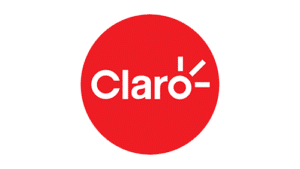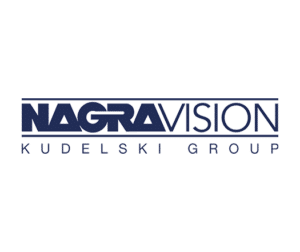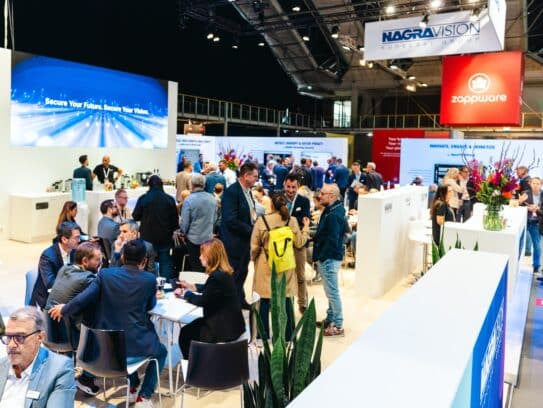In our latest blog, Tim Pearson reflects on the recent Connected TV World Summit in London, the topics that were discussed and how NAGRA is helping to address both the challenges and opportunities presented by a media and entertainment industry going through a period of transformation.
Last week, it was off to London for the annual Connected TV World Summit. Now hosted on Bishopsgate in the City, my route to the venue took me on a circuitous route and as I passed Whittington Avenue I wondered if, borrowing slightly from the folklore, the future of the media and entertainment industry was going to be paved with gold?
One thing is certain, the M&E industry is undergoing a period of transition. Content fragmentation, demands for pay-as-you-go subscriptions, and new modes of engagement have been in play for some time. Now add to that a cost-of-living crisis that’s squeezing consumers until their proverbial pips squeak and we find ourselves discussing how media and operators can both sustain the current climate while exploring additional service opportunities.
It was perhaps no surprise then, that the Connected TV World Summit focused on three main themes: Subscriber Retention, The Role of AI and New Horizons. Let’s explore each of these in turn.
Subscriber Retention in a Cost of Living Crisis
According to Tim Mulligan from Midia Research, subscriber fatigue around entertainment at home when combined with the cost-of-living crisis has, for the first time, shown a contraction in digital entertainment growth. Equally, looking at the market we see two approaches to content selling. Those selling devices and/ or services (e.g. Apple or Amazon) off the back of content and those for whom content is core to their business. For this latter group, and as EVP and CMO of NAGRA, Nancy Goldberg commented, “We all need to collectively preserve the value of content as without this, media and entertainment operators will have a tough job ahead.” Discussing this further, the panel explored correlations between different types of demographics – older demographics are slower to churn and less elastic when compared to younger demographics. This segmentation of the audience is not new but to react to it requires flexibility – of price, position, content partnerships and consumption behavior.
As part of deriving content value, one important contributor is understanding every ounce of consumer behavior data. At NAGRA we have been exploring this in some detail. Using digital twin technology, AI and advanced algorithms, our teams have created a Smart Pricing solution that is designed to simulate the impact of changes to subscriptions, new offers or pricing on each subscriber’s digital twin. Seeking to understand likely reactions within the safety of the digital twin environment before being launched live, the solution has been proven to help uncover not only consumption habits but also deliver sizeable benefits. This can open a new world of possibilities and enable strategies that were previously not accessible. A powerful force with which to address today’s market challenges, the approach can personalize offerings based on previous behaviours. This then delivers the right package at the right price for the right subscriber and can simulate business scenarios that maximize the competitiveness of the operator.
The Role Of AI
I discussed above how we’re using AI at NAGRA to help drive new approaches to subscriber retention. At the London event there was also much discussion about how AI can help our industry drive tangible changes in other areas. One such area was recommendation and personalization. Delivering the illusion of choice, AI tools have for some time been a key weapon in the video service operator’s arsenal through which to offer recommendations to help subscriber discovery – as is done by NAGRA partner XroadMedia as part of our OpenTV Video Platform solution.
But let’s take that a step further.
If we looked as AI as a vehicle to further drive engagement, could it also extend into generating thumbnail images for content that are linked to an AI-created profile, perhaps derived from a digital twin solution? Equally, new immersive content delivered through Virtual Reality headsets or Augmented Reality content could be presented differently through an AI engine that scours vast vaults of metadata to pull out the key points that the subscriber is interested in. Finally, could AI provide the answer to the costly business of language and caption localization through on-the-fly or equivalent translators? While some of these subjects were touched on in London, it’s clear that there is still much opportunity to be leveraged with AI!
New Horizons
‘What’s next’ was keenly discussed at the conference. New services, designed to protect hyper-connected lifestyles need to bring together new partnerships and technologies and of course, there was also discussion around the ubiquitous metaverse. The ultimate aim is for video service providers to be able to market to householders rather than just the household. The fulcrum of these new horizons is based around a core identity and ewallet offer designed to put the consumer firmly back in charge of their identity. This aims to prevent the ‘islands of identity’ that occur today as our connected lives use apps for a variety of needs beyond entertainment such as travel, groceries, and finance. Ultimately, the road ahead is likely to be less about new devices, new packages, and new content and more about a wider service proposition designed to offer both security as well as entertainment.
After a hectic two days in London, it’s clear that this is an industry that while going through change, still abounds with opportunity. In fact, given the fusion of some of the technologies that were discussed and how they can support existing media and entertainment propositions, there’s an exciting future ahead! If you’d like to discuss how NAGRA solutions are supporting the above themes or how we’re looking at the possibilities beyond the horizon, please contact us; we’d love to continue the conversation.























